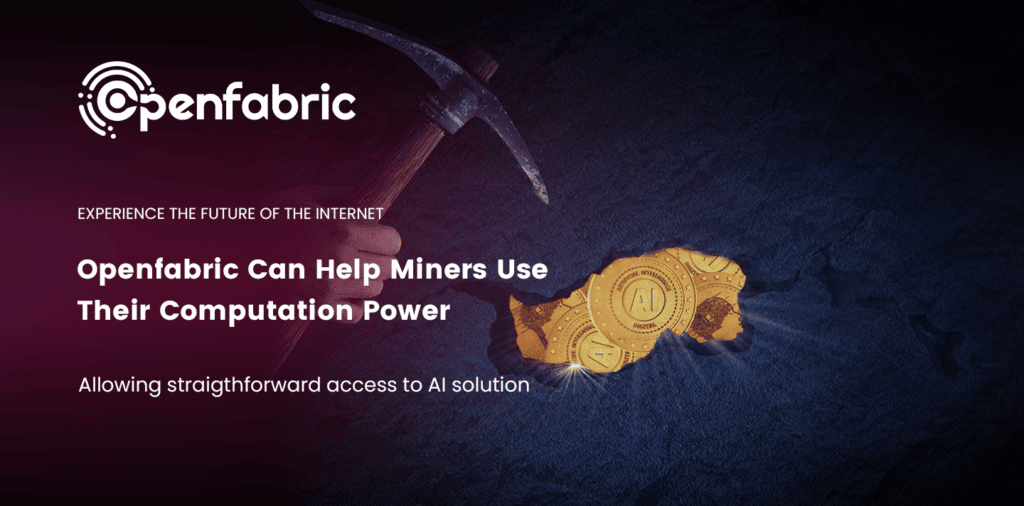
August 12, 2022 3 minutes read
Openfabric Can Help Miners Use Their Computation Power

Miners of The Modern World
When we hear the term miner, the image of a worker digging away in some remote location comes to mind. While these miners toiled away in harsh conditions, the modern-day miner sits in an airconditioned room in front of a computer screen. The advent of cryptocurrencies has given new meaning to the term mining. In the context of cryptocurrencies, the process of solving a mathematical problem and earning a small reward in return for it is called mining. Miners can make use of simple computers or more advanced ‘mining rigs’. These are advanced computers having huge amounts of computational power. Not only are these computers expensive but they also consume a lot of electricity.
The number of miners and competition in the space is increasing. Not only this, but the number of Bitcoins that can be mined is also finite. In the mining process, the miner must solve the cryptographic puzzle to add a block of transactions to the distributed ledger. Resultantly, the miner dedicating the most computational power has the best chance of earning the reward. Due to more miners entering the race, the cryptographic puzzles continue to become tougher to crack, and hence more computational power and energy are required to solve them.
AI’s Answer to Mining Process Inefficiencies
We have seen that mining has become a very resource-intensive task and the amount of computation power and energy required to mine a block only continues to increase.
The Bitcoin protocol uses the Proof of Work (PoW) consensus mechanism. This mechanism’s drawback is inefficiency as most of the computational efforts are wasted and only the lucky few are rewarded; quite similar to how a lottery operates. A new approach by the name of Proof of Useful Work (PoUW) enables miners to create new coins based on the ML training work that they perform. This novel concept uses a distributed and decentralized machine learning system on the blockchain. The mechanism not only rewards miners for useful work done but also deters and punishes bad actors. Overall, PoUW is more cost-effective compared to PoW.
In recent times we have also seen an uptick in new AI chips that are purposefully built to cater to miners. Chip makers such as Bitmain are continuing to invest in the AI domain. The usage of these chips and other hardware that is tailored for miners will help address the inefficiencies of the mining process.
Lending Computation Power
Solutions such as the ones listed above have made mining more lucrative once again. Now miners are not required to dedicate all of their available computation power for the sole purpose of mining. With intelligent AI solutions that can help manage resource allocation, miners are left with ample computation power to spare. This spare computation can be put to other uses. One of the best possible uses is to allocate computational resources to train AI algorithms. Openfabric allows miners to become a valuable part of the ecosystem by enabling them to lend spare computational resources to the ecosystem. This way, miners can also become key infrastructure providers of Openfabric. The computational power that they allocate to the platform will help train AI algorithms and result in more efficient and productive AI applications.
The top key stakeholders of the Openfabric platform include service consumers, AI innovators, data providers, and infrastructure providers. By allocating computational resources to the platform, miners get the opportunity to become one of the four key stakeholders of the platform.
Openfabric and Miners
Openfabric has provided the AI community with much to rejoice about. The platform has something for everyone. Keeping in line with its approach of providing maximum value to the community, Openfabric is enabling miners to contribute their spare computational resources to the platform. This way they can reap the maximum benefit while also contributing to fostering progress and development in the AI industry.
To learn more about the Openfabric platform and how you can contribute or use it, stay tuned to our social media channels such as Twitter, Telegram, Linkedin, Facebook, and Youtube.

